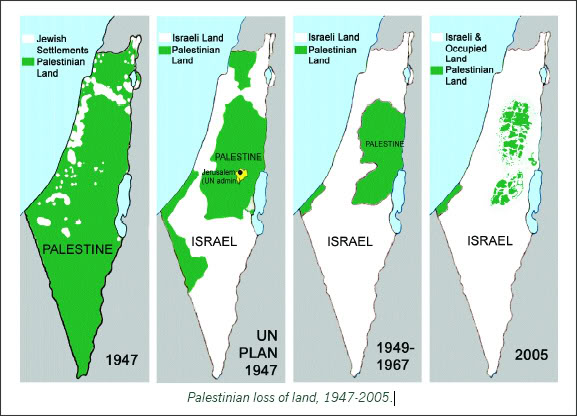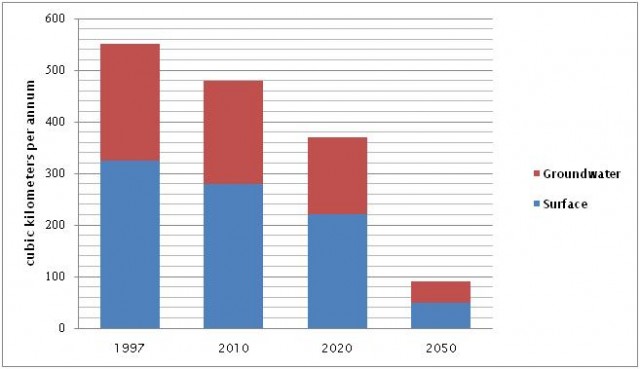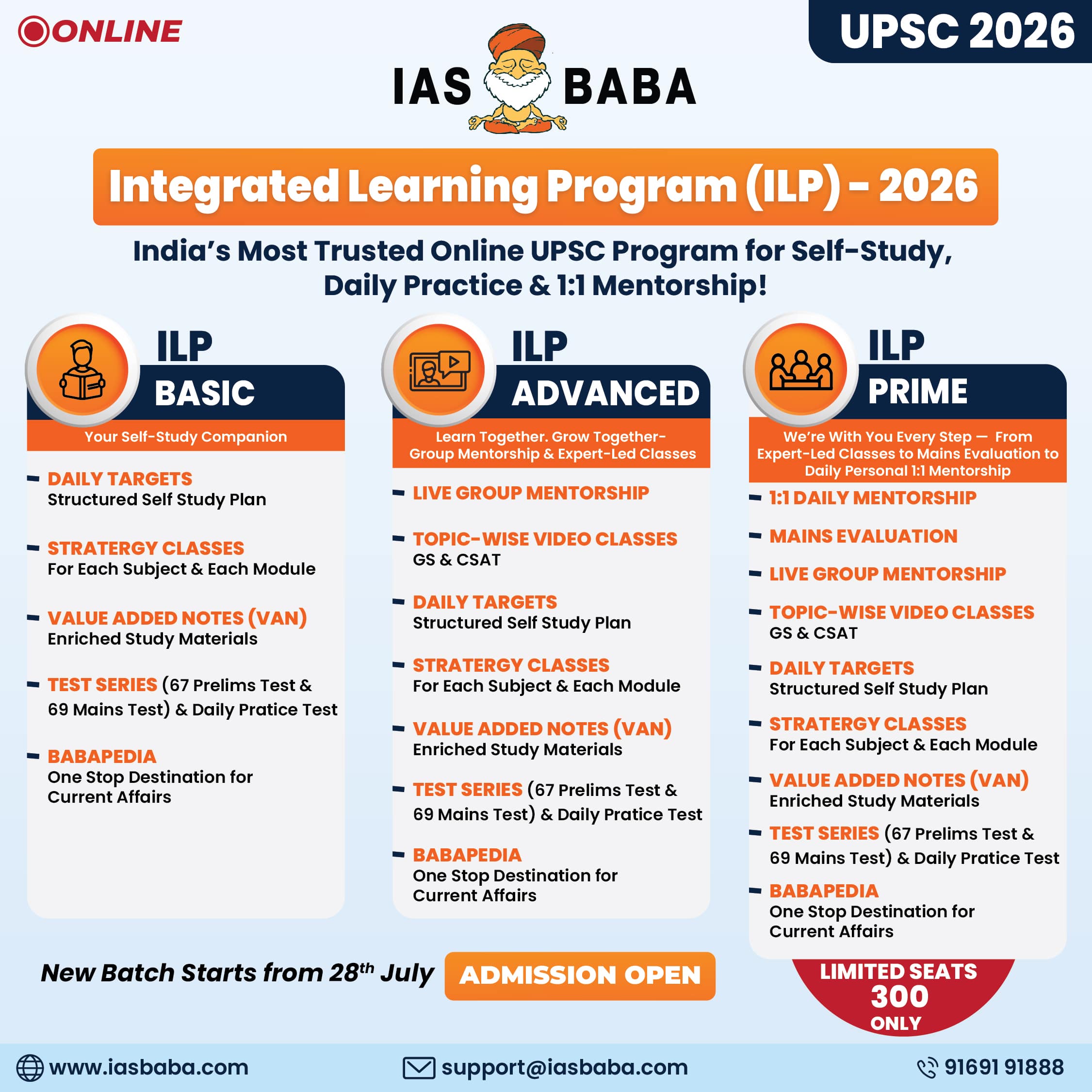IASbaba's Daily Current Affairs Analysis, IASbaba's Daily Current Affairs Dec 2016, International, National, UPSC
IASbaba’s Daily Current Affairs – 29th December 2016
Archives
INTERNATIONAL RELATIONS
TOPIC: General Studies 2
- Important international institutions, agencies and fora, their structure and mandate.
- Bilateral, regional and global groupings and agreements involving India and/or affecting India’s interests
Israel, Palestine and the World Reaction
Introduction
In 1967, Israel seized the parts of Palestine which had been outside its control such as West Bank, East Jerusalem and the Gaza Strip. The United Nations Security Council (UNSC) has ever since passed a series of resolutions asking Israel to withdraw from the territories and to desist from building settlements on the occupied territories. Based on the assumption of Israeli withdrawal from this land which was occupied in 1967 is the two-state solution, the international consensus for the Israel-Palestine conflict. The occupation by Israel of the Palestinian territories over the years can be understood from the below image.

Picture credit: http://israelipalestinianmastelags.weebly.com/uploads/3/1/1/4/31142973/7490634_orig.jpg
Latest Development – UNSC Resolution
UNSC has introduced Resolution No. 2334 which condemns Israel’s settlement activity in the occupied territory of the West Bank and East Jerusalem. The resolution has been passed with 14 votes in favour and one abstention (the U.S.A.). This gives a lot of hope to nations which still want this entire crisis to be resolved by the two-state solution.
USA and its stand
USA has for long acted as a shield for Israel. A resolution in 2011, during the Arab Spring, was vetoed by it. Now when the USA has abstained from voting in this resolution, it justifies its change in approach by saying that the resolution in 2011 would have not given negotiations a chance and would have led to Israel totally going on a violent and aggressive spree. However, unfortunately the same is happening now. USA terms the language of the current resolution as tentative and has also hesitated to call Israel settlements illegal.
Further, the emergence of International Criminal Court (ICC) and its desire to act against Israel has constantly seen USA vetoing resolutions and in some instances abstaining from voting against Israel to protect Israel. However, USA has made no commitment to assist Israel in retaining territories seized in the 1967 war and also did not veto resolutions to defend the settlements.
Israel and ICC
From an Israeli point of view, it is not the UN resolution that is a major concern for them but the criminal investigations that would follow thereafter. The ICC has already opened a preliminary investigation into Israel’s actions during the 2014 bombing of Gaza and into the illegal settlements. Though the ICC has clarified that it would not proceed with a comprehensive criminal investigation without a clear go ahead from the UNSC, the recently passed resolution has paved way for such action.
Now once the resolution is in force and since Palestine is a recognised state in the United Nations (UN) and a member of the ICC, a comprehensive investigation against Israel could be on the cards very soon. As a result, settlers in the West Bank and East Jerusalem would feel threatened and Israeli soldiers will feel pressurized to refuse to serve in any future criminal bombardment of Gaza.
ICC investigators visited the West Bank and East Jerusalem in October this year but refused to acknowledge the visit as a part of its preliminary investigation. The new UN Security Council resolution is expected to include more radical action steps as considered in 1979 and 1980 and also will be guided by the International Court of Justice’s 2014 finding that the apartheid wall that entraps the West Bank is illegal. Pressure will increase on ICC to take the investigations forward.
Israel, Palestine and world resolutions
The first UN resolution was passed in November 1967 without any abstention or veto by the permanent members. UN has periodically censured Israel for its ongoing occupation and the violation of the Fourth Geneva Convention which deals with the construction of settlements on occupied land.
The Oslo Accord emphasised on the creation of Palestinian state although it did not have an explicit statement regarding the same. Israel does not want a two-state solution or even a one-state solution. This approach of Israel shows its intent of a permanent occupation of the Palestinians and its dream of a Greater Israel.
Four years after Oslo, the Rome Statute led to the establishment of the ICC. It was the creation of ICC which had a greater impact than the Oslo Accord. Subsequently, USA increased the vetoes and protected Israel. The creation of ICC has been worrisome for Israel because it would increase its focus on issues such as population transfer and war crimes. Even ICC is under pressure to investigate crimes outside the African continent and Israel and its actions provide a legitimate site of inquiry.
Conclusion
The international community should take lesson from how the Iran issue was handled in the past. All world powers had come to agree on terms of sanctions to be imposed on Iran. Renewed efforts to broker peace in the Israel-Palestine conflict will result in success only if Israel shows flexibility in its stand and the nations come together for this cause. However, if Israel continues to reject any other approach and stays strong in its belief or right to occupy territories in Palestine regions, the conflict is here to stay.
Connecting the dots
- Throw light on the genesis and the evolution of the Israel Palestine conflict. Suggest a strategy that should be adopted by the international community to bring this longstanding dispute to an end.
NATIONAL
TOPIC: General Studies 2
- Government policies and interventions for development in various sectors and issues arising out of their design and implementation.
Water woes and rising social discontent
- The word rival comes from the Latinrivalis, which means those who share the waters of a river and be prepared for trouble in paradise.
- There are only two units of water to be distributed. The total surplus maximizes when the upstream farmer uses one unit in watering the most fertile portion of his land and the downstream farmer uses the remaining one unit on his most fertile acreage.
- However, the upstream farmer may well use his positional advantage to grab both units of water. This is not ideal from the efficiency viewpoint. In addition, if the second farmer is relatively poor, then there is a further issue of inequity.
- Such kind of water disputes has been present in India which has given rise to social conflicts between upstream and downstream inhabitants or rich and poor neighbours.
River water disputes in India
- India has faced multiple river water disputes in India- Cauvery, Indus, Sutlej, Yamuna, Brahmaputra, Teesta — which reflect the discontent present within state boundaries.
- Governmental intervention to settle ‘riparian rights’ (the rights of those owning land on the borders of a river) often involves laying down rules on the quantity of water that can be used by each user.
- On certain occasions, the adjudication involves not merely private parties but different governmental jurisdictions also.
Cauvery dispute
- An important factor affecting the agreements reached is the relative power of the negotiating parties.The Cauvery agreement prescribes the quantity of water that accrues to Karnataka, Tamil Nadu, Puducherry and Kerala.
- The Cauvery agreement was struck in 1924 between a powerful Madras Presidency under British rule and the Mysore state under the Wodeyars. As a result, it is believed, the terms were skewed in favour of Madras.
- The agreement has been revisited frequently after a tribunal was constituted in 1990 but implementation becomes difficult in a situation when the Central government and two main state governments involved, are governed by different parties.
- Such agreements are susceptible to delays and opacity in decision making and they suffer challenges of monitoring.
Indus water treaty
- Some agreements, to reduce problems, divide the rivers in a basin between upstream and downstream users instead of dividing the water of a single river.
- The Indus Water Treaty between India and Pakistan is an example where India gets the waters of the Sutlej, Ravi and Beas, and Pakistan gets the waters of the Indus, Jhelum and Chenab with limited rights for India on the upstream portion.
Satluj Yamuna Link Canal
- The sharing of waters between Haryana and Punjab was decided at the time of the formation of Haryana in 1966, when the Central government and both the state governments were under Congress rule.
- Construction of the Sutlej-Yamuna link canal was officially started in 1982 to operationalize the agreement under the same configuration of governments.
- Today even though one party is involved at the Centre as well as in the state governments, it is not in a position to openly support the transfer of water from Punjab to Haryana.
- Indeed, the sabre rattling of the Prime Minister on the Indus Waters Treaty in the run-up to the Punjab election can partly be construed as a cover-up for the fact that the Central government cannot openly oppose the Sutlej-Yamuna link canal.
- This is a reflection not just of political and legal realities, but also of the far greater stress on water resources after close to 50 years of over-exploitation.
Tragedy of commons
- The utilization of common property resources is subject to the ‘tragedy of the commons’, a concept popularized by the ecologist Garrett Hardin.
- Each user of the resource fails to take into account the effect of his usage on the depletion of the common property resource for other users. As a result, the resource is overused.
- The problem of the commons becomes amplified when the total stock of the resource is depleting every year.
- In the alluvial aquifers of northern Gujarat, the reserves, and therefore the tube wells, are evenly spread out.This allowed the cohesive Patidar community to cleverly use the groundwater for a time.
- However, in the hard rock aquifers of the Deccan plateau, tube wells are often situated in close proximity due to the spatial concentration of suitable reserves.
- As a result, each user is quite cognizant that their access to water becomes reduced by the water extraction activities of their neighbour. A race to the bottom ensues as each user aims to maximize its water usage.
- The cultivation of high water intensity crops like sugar cane, paddy, mulberry and vanilla flourishes in areas of maximum water scarcity, precisely where it is most unsustainable.
Depletion of water resources
- The depletion of groundwater reduces the flow in rivers in two ways:
- It reduces the recharge of rivers from groundwater
- It occasions the demand for dams and canals from communities that have become powerful in the groundwater economy—for instance, the demand for the Sardar Sarovar dam by the Patidars.
- This further reduces the flow and quality of surface water and puts river agreements at risk.
- When the exploitation of groundwater becomes unviable due to receding levels, when dams are delayed, and when exit options in the form of government jobs or migration to other countries dry out, there is unrest as powerful agricultural communities hit the streets.
- The Patidar, Maratha and Jat agitations are symptoms of agricultural distress that can be traced back to the drying up of water resources and the lack of viable alternatives.
- This has resulted in increased rallies, demonstrations and bandhs in quota stirs.

Picture Credit: http://www.arlingtoninstitute.org/sites/beta.worldsbiggestproblems.com/files/images/India%20Water%20Availability.preview.JPG
Taking care of the problem
- The United Nations estimates that half of the world’s population will live in areas of high water stress by the year 2030.
- It is difficult to have a thriving economy when fresh water is not easily accessible for industrial, farming, and individual use.
- Such conditions have already started taking place in the rural as well as urban areas in India. The recent Cauvery water sharing dispute saw violence and loss of lives.
- Economic liberalization intensified the problems of most of the deprived groups. Marathas are no exception. The paucity of jobs and the burgening agrarian crisis have affected the community over the years. As a matter of fact, maximum farmer suicides are reported in the Maratha community.
- In the Patidar-dominated Saurashtra region, cash crops like jeera, groundnut, cotton have been affected, with production dipping. Their traditional profession of agriculture is losing its sheen due to poor monsoons as well as shortage of groundwater in the water scarce region. This is making Patidars turn towards cities, and more specifically government jobs in cities.
- This points out to the fact that agriculture has a played a critical role in lives of dominat caste of the region. Water crisis has pushed them to the brink of survival and hence there is a rising discontent amongst them with regards to more liberal reservation policy for them to survive.
- Thus, water concerns — whether solving interstate water dispute or maintaining the surface water and ground water resources — need to be addressed at priority level to prevent any kind of water war being initiated in the country. If this fails to happen, India is bound to face a new internal security challenge.
Conclusion
Water is increasingly an important site of contestation between states in India because of the rapid pace of economic growth, growing populations and increasing urbanization. The growing importance of forging coalition governments at the national level and the related assertion of regional identities add to the intractability of the problems. Also, India needs a comprehensive water management programme to put a break on depleting water supply. The Interlinking of River Project has to become a reality to bring about water security in the country. The clear and present danger of water emergency is starkly visible to all. If the business as usual is carried out, there will be sharp decrease in agricultural production, which will negate all of the previous efforts at food security. As a result, the clashes between various groups in society will be difficult to contain as all would like to safeguard their interests through reservations. Hence, a radical revision of citizens’ relationship with natural resources is urgently needed to prevent the indications of disaster turn into a full-blown catastrophe.
Connecting the dots:
- Why is the dominant caste of Indian society fighting for its rights when such has been observed mainly amongst minorities and depressed? Analyse the situation.
- Why does India need a permanent National Water Council to decide interstate water disputes? Discuss.
MUST READ
Statesmanship at Pearl Harbour
Still frowning upon intermarriages
RIP nuance, the middle ground is shrinking
Reaching The Milestone
India in the world of global uncertainties
The recalibration of history in 2016
Is the Naga peace deal dead?
2016, a busy year for Parliamentary panels
Trump signals the end of globalization
Trouble’s brewing













